Archive photos reveal what home life really looked like in America’s Wild West
Building the Wild West

With the end of the Civil War in 1865 came the completion of the western railroads, opening up vast portions of America rife with opportunity for development and economic exploitation.
Eastern settlers poured into the western frontier, eager to make their fortunes in this new world as miners, farmers and above all, ranchers, giving rise to the iconic image of the American cowboy. However, life in the Wild West was far from the heroic adventure glamourised by Hollywood as these amazing photos show.
Click or scroll to delve into the photographic archives of American history…
1870: family poses outside their western ranch house

As intrepid American settlers pushed into the western frontier, they had to learn to make do with the sparse materials available to them to construct homes, businesses and shelters for livestock.
This rare stereopticon image from 1870 depicts a family gathered together in the doorframe of their western homestead. The single-storey, log cabin-style home was typical of western settlement houses, as it was quick to build and held up well against the elements.
1872: cowpokes relax around a fireplace
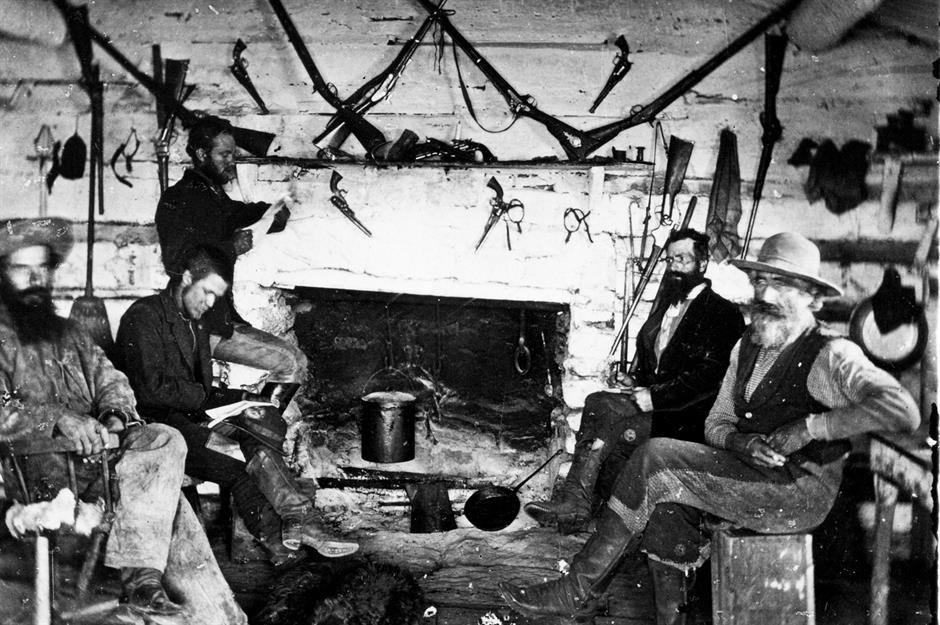
Inside, these homes were sparsely furnished with only the barest necessities. However, there was still some room for personalisation, even if it was only with the daily tools of your trade.
This remarkable photo from 1872 depicts five 'cowpokes', otherwise known as cowboys, gathered around the cooking fire of a home, with the wall behind them spectacularly decorated with the shotguns, pistols and spurs which were their daily stock and trade.
1870: Homestead Act settlers outside their Nebraska farmhouse
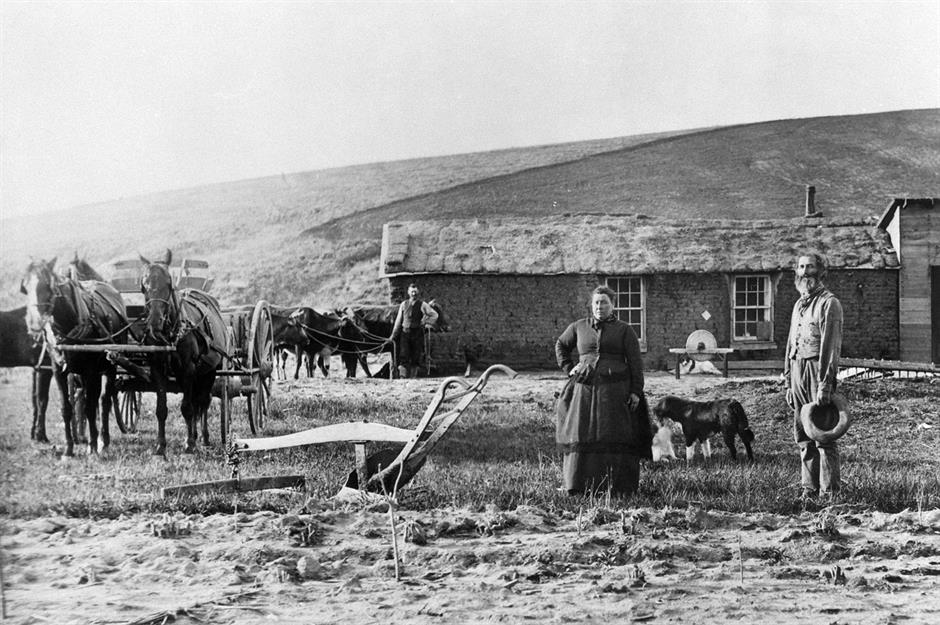
In 1862, Abraham Lincoln passed the Homestead Act, designed to accelerate the settlement of the West by offering families 160 acres of surveyed public land at a low cost in exchange for a commitment of five years of continuous residence on that land.
While the act ultimately proved something of a failure when it came to encouraging homesteaders to travel west, it was particularly lucrative for loggers, miners and cattle owners – also known as ranchers – like those pictured here.
1880: cowboys on the range in front of the cook's tent

The life of a late 19th-century cowboy was hardly the ‘rootin-tootin’ thrill ride popularised by movies and TV shows 70 years later. Cowboys worked long, hard hours under difficult conditions, often foregoing the comforts of homelife altogether for extended periods on the range.
During these periods, they would set up makeshift tent camps. This photo from 1880 depicts a large group of cowboys posing in front of the cook’s tent in just such a range camp.
1885: cowboys saddle up in front of their rickety ranch house
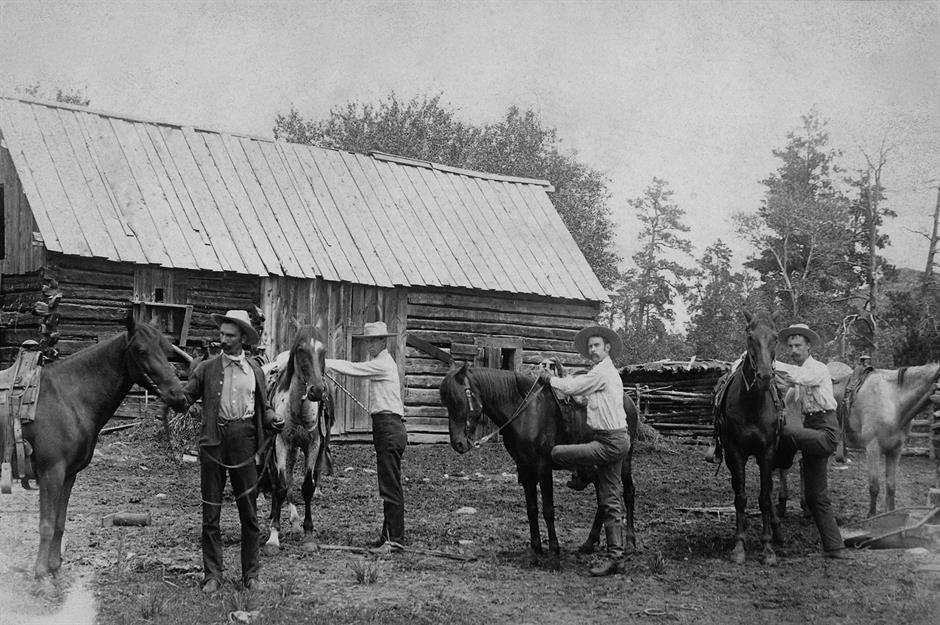
Because home life was hardly a priority for the average cowboy, houses on the range were often of haphazard construction, like the ramshackle ranch house pictured in the background of this photograph from 1885.
Both the walls and roof of the home are made of a rough plank construction, and the windows are mere openings in the walls, as glass for panes would have been both expensive and rare.
1888: Western ranch houses
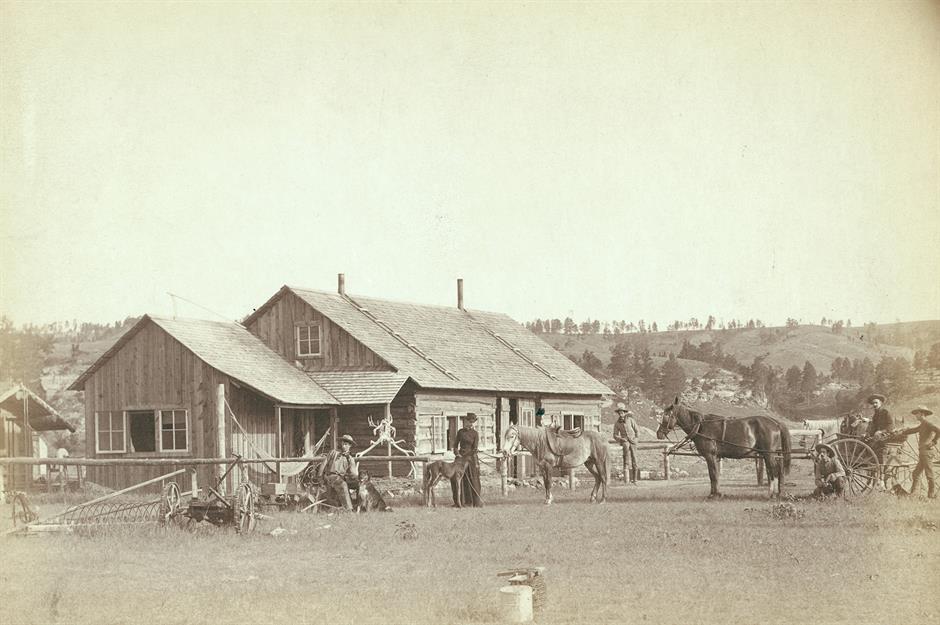
The ranch house pictured here, just a few years later, is substantially more sophisticated. While still of a log cabin-style construction, this home boasts a slate roof and glazed windows.
Outside, some farming equipment and even a horse and cart suggest that the ranch might have been relatively wealthy. In the late 19th century, there was a marked distinction between farmers and ranchers, and the two groups were often at odds, fighting over land and water rights.
1890: a family and their Plains house
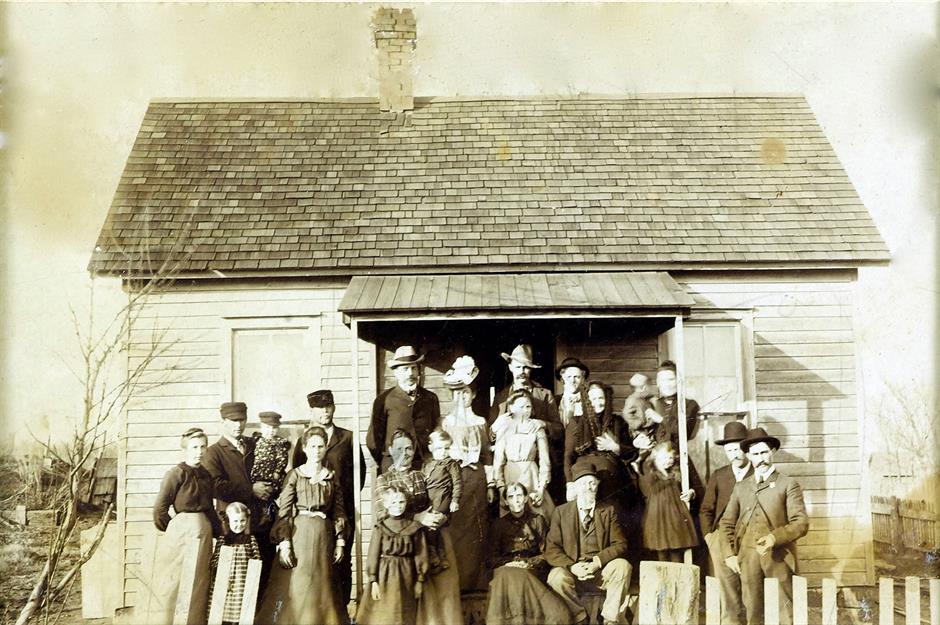
Ranching families and farming families differed in many significant ways, including the style and build of their homes.
Farmhouses, like the Great Plains home pictured here, could be one or two storeys in height, usually of a squat rectangular construction with a central chimney.
They often featured the slate roofs and clapboard cladding of their New England antecedents, like this one.
1890: an Arizona ranch family and their home

Ranch homes, meanwhile, were always one storey, usually with low eaves and steeply pitched rooflines.
Characterised by their long, low-to-ground profiles, these homes occasionally include covered porches, like the Arizona property pictured here in the 1890s. They were often accompanied by various outbuildings, such as stables for livestock or sheds for storing tools and other equipment.
Late 1800s: the oldest ranch in America
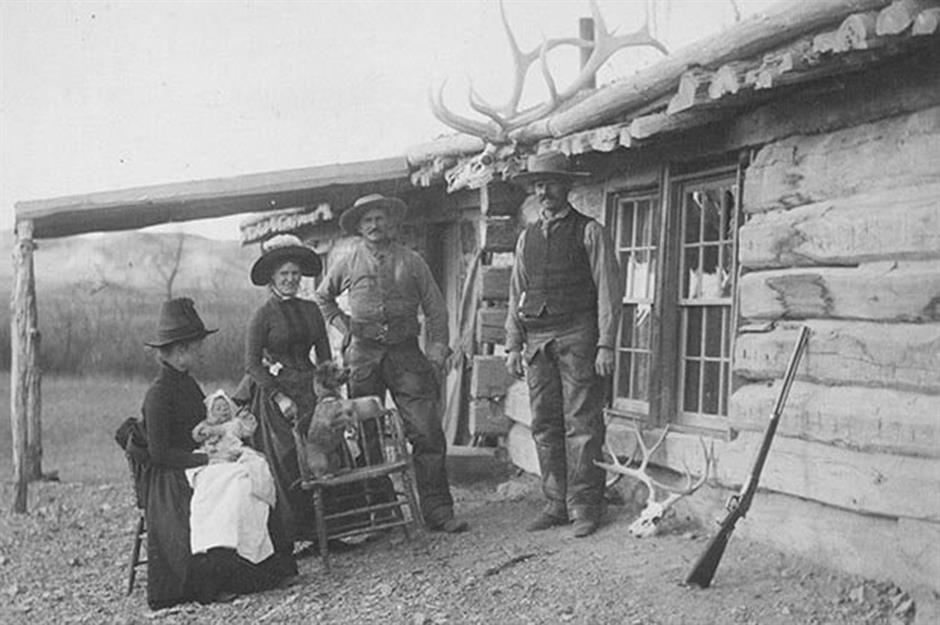
While resources for interior or exterior domestic ornamentation were scarce out West, many ranching families used the skulls of elk or deer to decorate their rooflines and doorframes, like the North Dakota ranch house pictured here.
Hunting was a significant component of the cowboy way of life. At the start of the 1800s, native species such as elk and buffalo existed in such large numbers that it made ranching nearly impossible. Of course, by 1900, the wild buffalo had been nearly wiped out in North America.
1890: cowboy poses in front of his ranch house
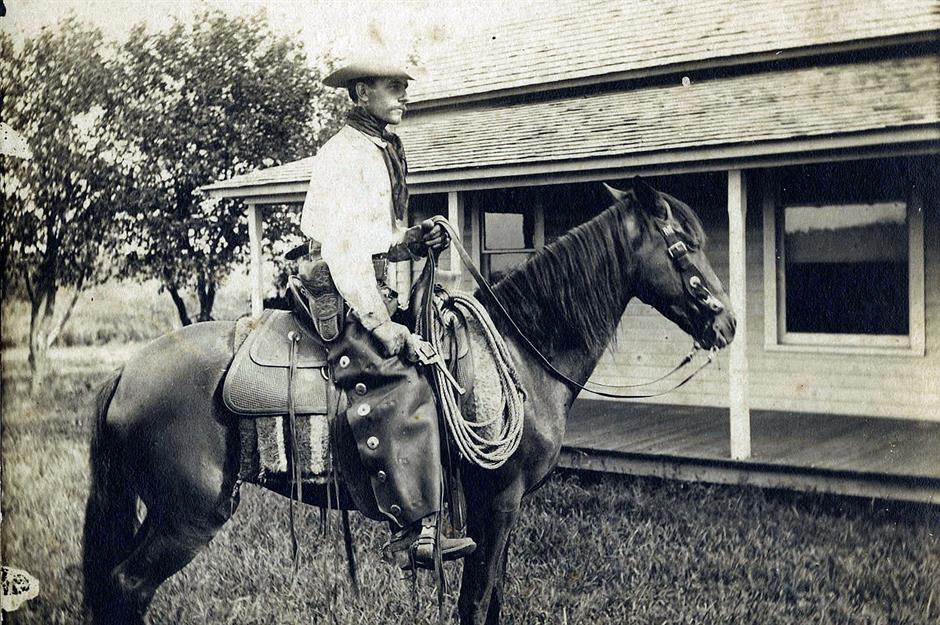
Cowboys depended on animals, too, to facilitate their ranching interests. Horses were particularly invaluable, enabling them to travel quickly and keep up with livestock, and responsive enough to a rider to make herding much easier.
This cowboy pictured around 1890 outside his traditional ranch home might have walked straight off a Hollywood set, complete with heavy leather chaps, spurs, boots, pistol and the iconic cowboy hat.
1900: Buffalo Bill and his Wild West Show
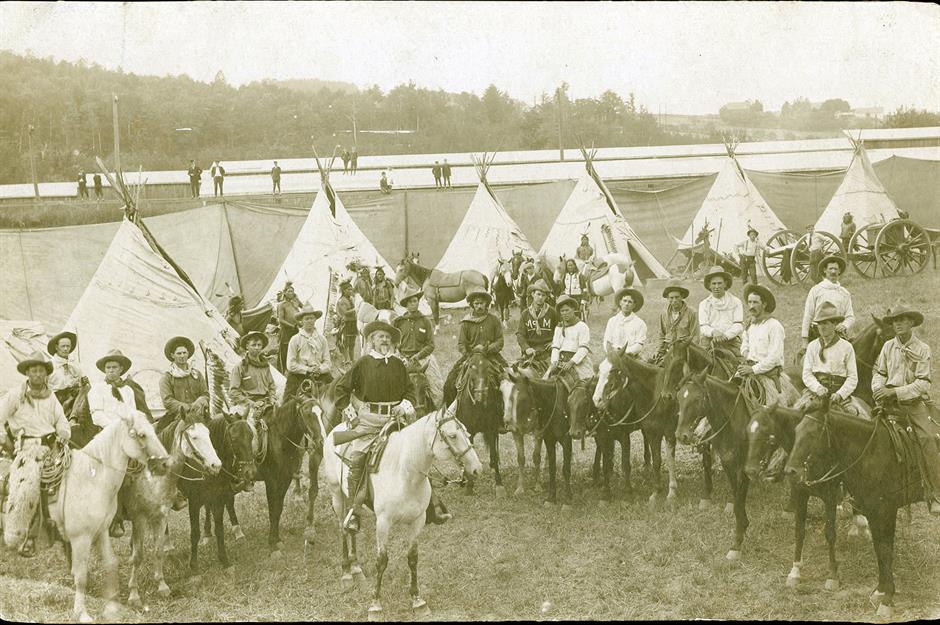
William Cody, more famously known as Buffalo Bill, is largely attributed to putting the concept of the heroic cowboy and the ‘Wild West’ on the national stage – quite literally.
An Iowa-born former Pony Express member and Civil War veteran, Cody created ‘Buffalo Bill’s Wild West Show’ in 1882, an immersive theatrical performance which glamourised cowboy life as performers demonstrated bronco riding, roping and other rodeo-style tricks.
Buffalo Bill is pictured here with his cast on the Miller Brothers' infamous 101 Ranch in Oklahoma.
1900: Main street in Manhattan, Nevada
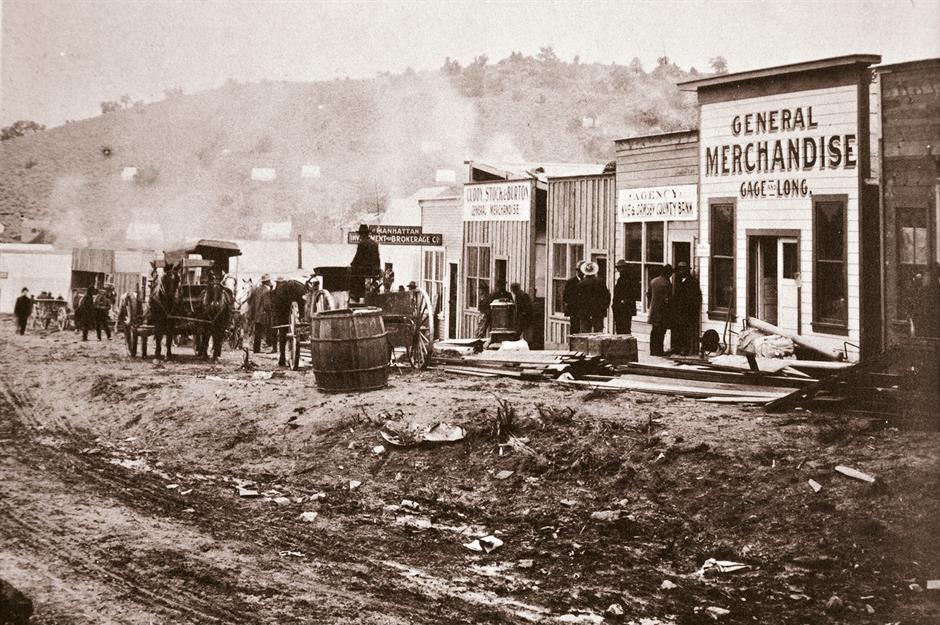
Another image from 1900, which could easily depict a Hollywood set, this snap shows the main street in Manhattan, Nevada. As the number of settlers along the western frontier increased around the turn of the 20th century, some semblance of civilisation grew around more populous areas.
The extension of the railroads facilitated an easy flow of goods out West, and soon stores were stocked with ranching equipment, cattle feed and even home goods to make domestic life a bit more comfortable.
Early 1900s: a family outside the Hamilton Ranch house

By the early 20th century, ranchers had pushed as far west as Oregon, where Hamilton Ranch – pictured here – was located.
A slightly ramshackle structure, the home nevertheless features the rough-hewn, wide plank walls, a steeply slanting roofline, and various pieces of farming equipment scattered around the yard that were characteristic of the original Great Plains ranches.
Early 1900s: chuckwagon on the Crowe Ranch
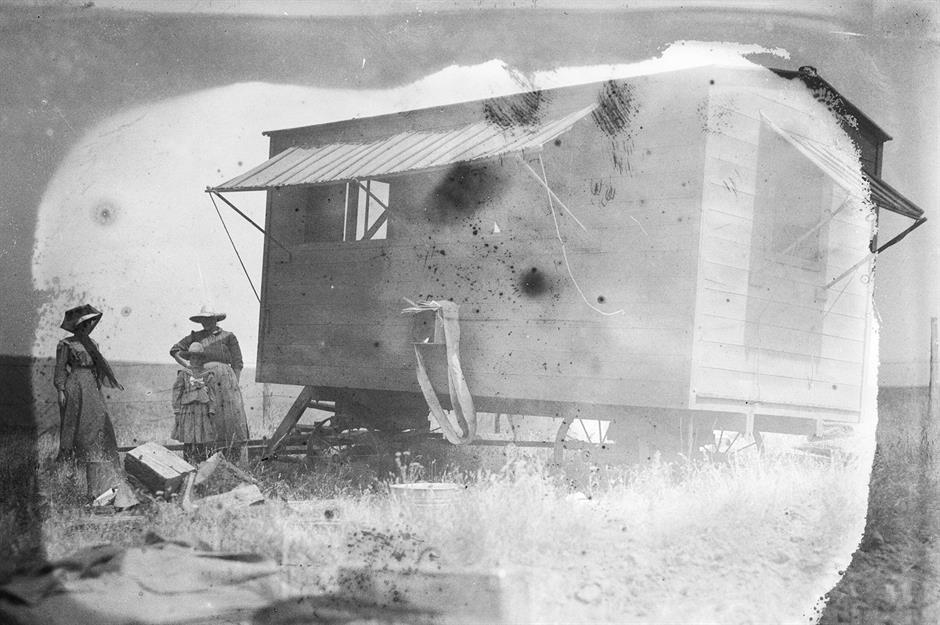
Cattle drives could take anywhere from three to six months during the Open Range era (roughly 1860s to the 1890s), which meant people had to get creative when it came to setting up makeshift, portable homes.
In the 1860s, cowboys started using chuckwagons, like the one pictured here. These were lightweight, shed-like structures which could be transported from place to place, serving as storage for tools, supplies and even rudimentary furniture, as well as portable kitchens.
Early 1900s: Eatons' Ranch from above
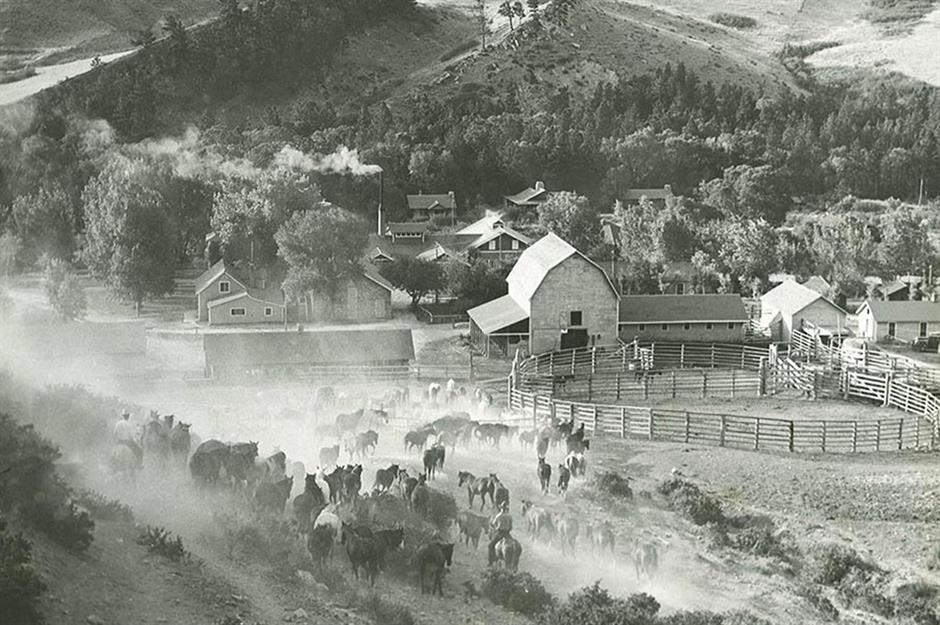
The ranching way of life became appealing to city slickers fed up with crowded, dirty streets and keen for a bit of open air. This led to the creation of dude ranches – recreational ranches where people could vacation to experience the ‘cowboy’ life.
The oldest dude ranch in America, pictured here, was established in 1879 somewhat by accident. The three Eaton brothers discovered their North Dakota cattle ranch was attracting their friends and family from the metropolitan East Coast to come and stay, sometimes for months at a time. The story goes that one of the guests urged them to charge for room and board, so they could stay as long as they liked.
1901: a bedroom at the Camulos Ranch
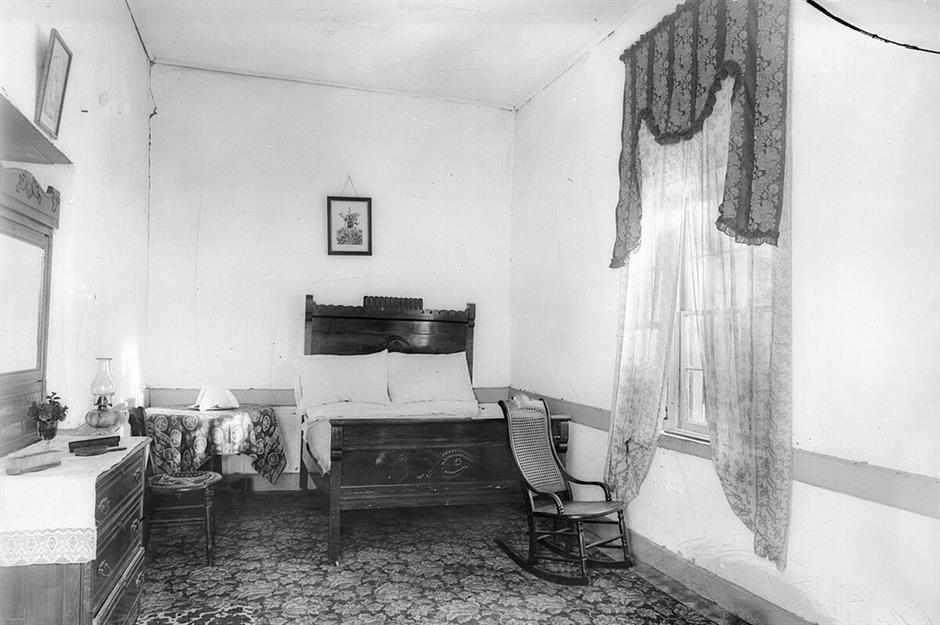
Interior shots of Western ranch homes are few and far between, but this lovely 1901 photo of a bedroom in the Camulos Ranch in California gives insight into what some of the wealthier ranches would have looked like in the early 20th century.
Elegant wooden furniture like this traditional bed, comfortable textiles such as curtains and carpets, and even luxuries like the art on the walls and the gas lamp on the dressing table suggest that this family business was booming.
1906: the Chapel at the Camulos Ranch

Another interior shot from the Camulos Ranch depicts the decadent chapel – a real luxury for a rural homestead. The lace-draped altar is dressed with candlesticks and vases full of flowers, the walls are covered in a vivid floral wallpaper and a collection of framed photographs and decorative prints, and the floor is covered in an assortment of plush carpeting.
The room also boasts a small piano and plenty of ornaments typical of fashionable early 1900s parlours.
1915: a mining town meat market and restaurant
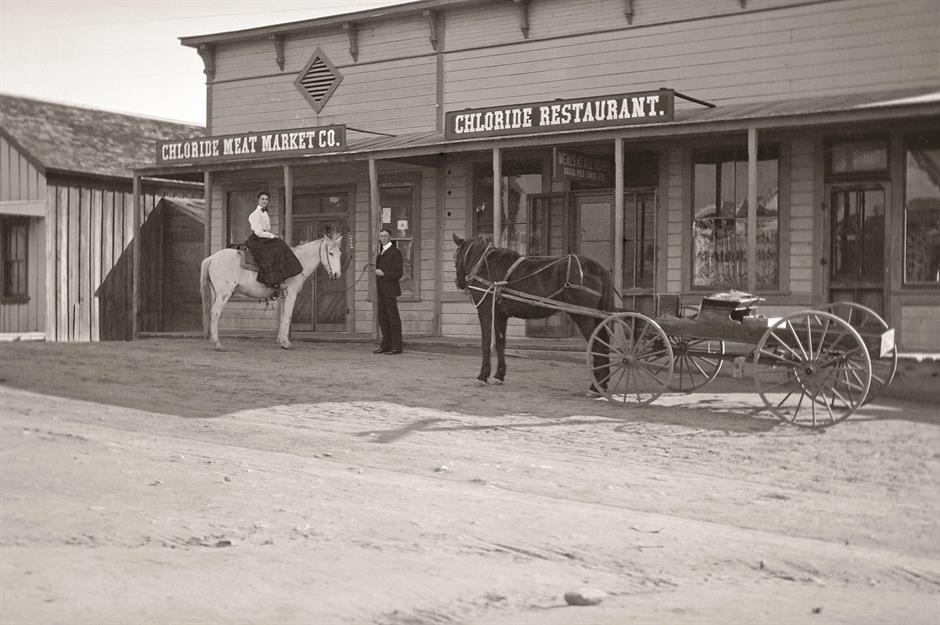
Where would these luxury home goods have come from on the remote western frontier, you might be wondering? As small towns began to develop along the frontier to serve the communities that had travelled out so intrepidly, so did the services and infrastructure such as general stores, restaurants and more.
By 1915, main streets like this one in the silver mining town of Chloride, Arizona had come a long way from their antecedents just 15 years earlier, coming into line with the appearance of town centres back east. However, as the mines ran dry, the people soon packed up and left. By 1944, Chloride was virtually a ghost town.
1916: traditional Texas ranch house
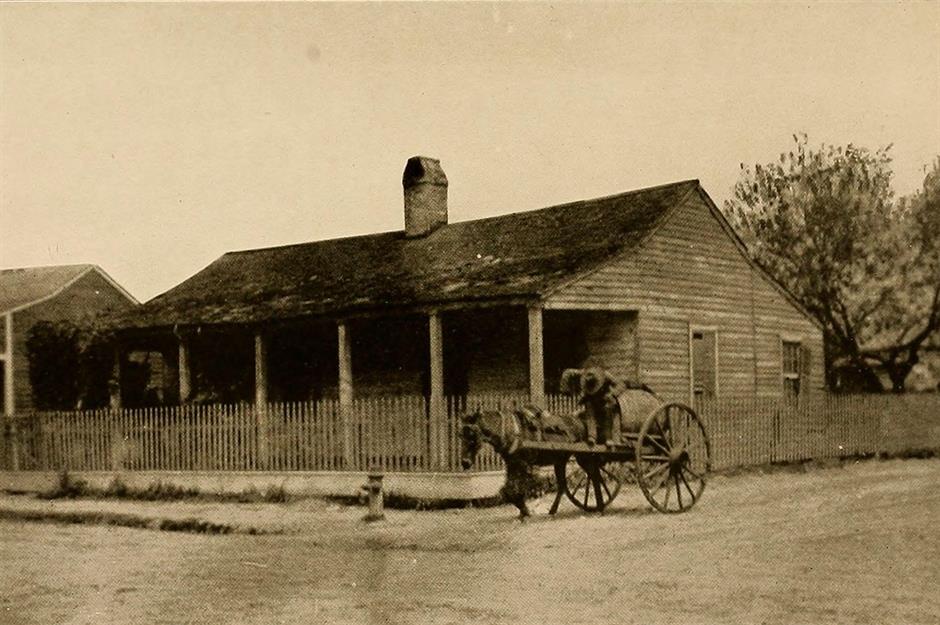
While this photo from 1916 depicts a very traditional Texas ranch, with its low-pitched roof and covered porch, by this time, the ranching way of life had begun to die off.
The invention of barbed wire in 1874 enabled farmers to fence off their territory, reducing access to grazing land and marking the beginning of the end of the 'open range'.
1916: a glimpse inside the Alamo

This remarkable photo of the famous fort’s interior offers a glimpse into one of the best-known scenes of American military history. The famous Battle of the Alamo took place in 1836, during which the Texan forces attempting to hold the fort fell to the attacking Mexican army.
By the 1900s, the original look of the building was recreated to reflect the rudimentary living conditions endured by Texan soldiers. It demonstrates the ‘make-do’ mentality and rough and ready living conditions which characterised the western frontier.
1925: Kane Ranch in Arizona
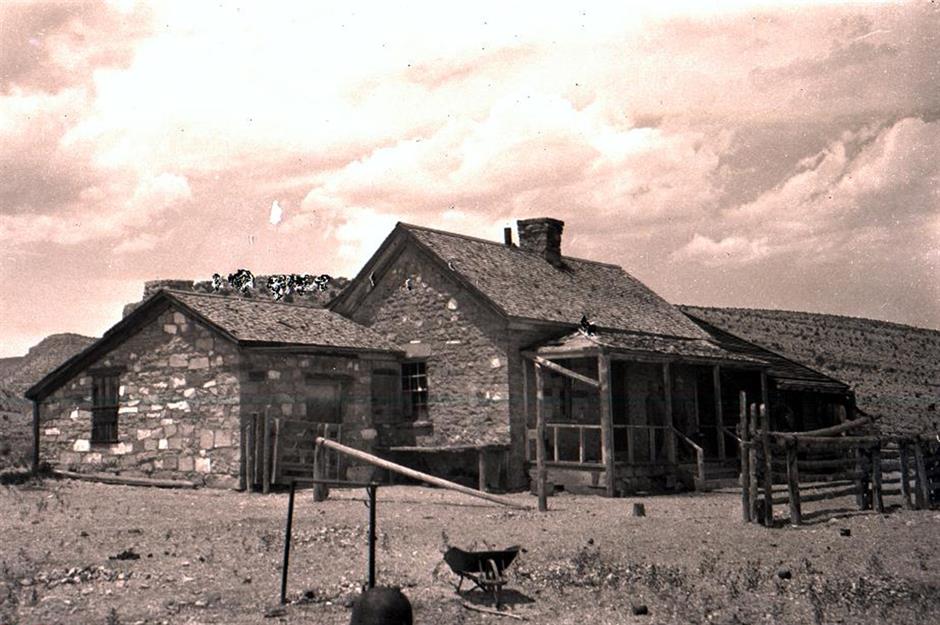
In the late 1880s, a combination of overgrazing and harsh winters meant that substantial numbers of cattle – which were not native to the western United States – had died, causing many ranches to go bankrupt at the end of the 19th century.
However, while the traditional cowboy lifestyle may have been curtailed, ranch houses like this one remained a staple of western architecture, as they are to this day.
Loved this? Now discover more incredible archive photos from homes through history
Comments
Be the first to comment
Do you want to comment on this article? You need to be signed in for this feature